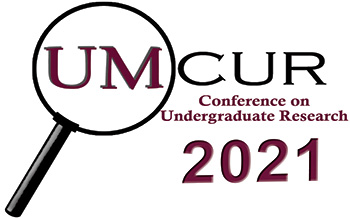Project Type
Presentation
Faculty Mentor’s Full Name
Lee Banville
Faculty Mentor’s Department
Journalism
Abstract / Artist's Statement
In Northern Ireland, children are divided between Protestant and Catholic schools. As such, the path of integrated education there is slow and complicated.
Through research as well as interviews with experts and people directly affected, I hope to give an American audience an understanding of integrated education in Northern Ireland and draw connections between integration in the States and Northern Ireland.
Less than 10% of Northern Ireland’s students were enrolled in integrated schools during the 2019-2020 school year according to a study performed by the Northern Ireland Statistics and Research Agency.
Unlike in the United States, education and religion have never been entirely separate in Northern Ireland. As far back as 1831, British authorities proposed creating non-denominational national schools.
When Northern Ireland broke off from the rest of the island in 1921, the leaders of the new Protestant-leaning government responded to popular pressure to ensure that the ‘state’ schools were essentially Protestant, according to scholars. The Catholic Church then insisted on maintaining its own schools.
The Education Reform Order 1989 mandated the Department of Education promote integrated education. It was the first time the government committed to support initiatives for the development of new integrated schools.
Nationalists targeted Holy Cross, a Catholic all-girls school in the middle of a Protestant neighborhood in Belfast, in 2001. Several acts of violence flared up, including throwing stones at students and their parents as they walked to school. Riot Police and the British Army lined the streets in order to protect them.
Some people believe integrated education will lead to an increased understanding between Protestants and Catholics bringing an end to situations like what happened at Holy Cross.
By the end of the semester, more Zoom interviews will be done to show the direct impacts of integrated education on schools, parents and students.
Category
Humanities
Integrated Education in Northern Ireland
In Northern Ireland, children are divided between Protestant and Catholic schools. As such, the path of integrated education there is slow and complicated.
Through research as well as interviews with experts and people directly affected, I hope to give an American audience an understanding of integrated education in Northern Ireland and draw connections between integration in the States and Northern Ireland.
Less than 10% of Northern Ireland’s students were enrolled in integrated schools during the 2019-2020 school year according to a study performed by the Northern Ireland Statistics and Research Agency.
Unlike in the United States, education and religion have never been entirely separate in Northern Ireland. As far back as 1831, British authorities proposed creating non-denominational national schools.
When Northern Ireland broke off from the rest of the island in 1921, the leaders of the new Protestant-leaning government responded to popular pressure to ensure that the ‘state’ schools were essentially Protestant, according to scholars. The Catholic Church then insisted on maintaining its own schools.
The Education Reform Order 1989 mandated the Department of Education promote integrated education. It was the first time the government committed to support initiatives for the development of new integrated schools.
Nationalists targeted Holy Cross, a Catholic all-girls school in the middle of a Protestant neighborhood in Belfast, in 2001. Several acts of violence flared up, including throwing stones at students and their parents as they walked to school. Riot Police and the British Army lined the streets in order to protect them.
Some people believe integrated education will lead to an increased understanding between Protestants and Catholics bringing an end to situations like what happened at Holy Cross.
By the end of the semester, more Zoom interviews will be done to show the direct impacts of integrated education on schools, parents and students.
